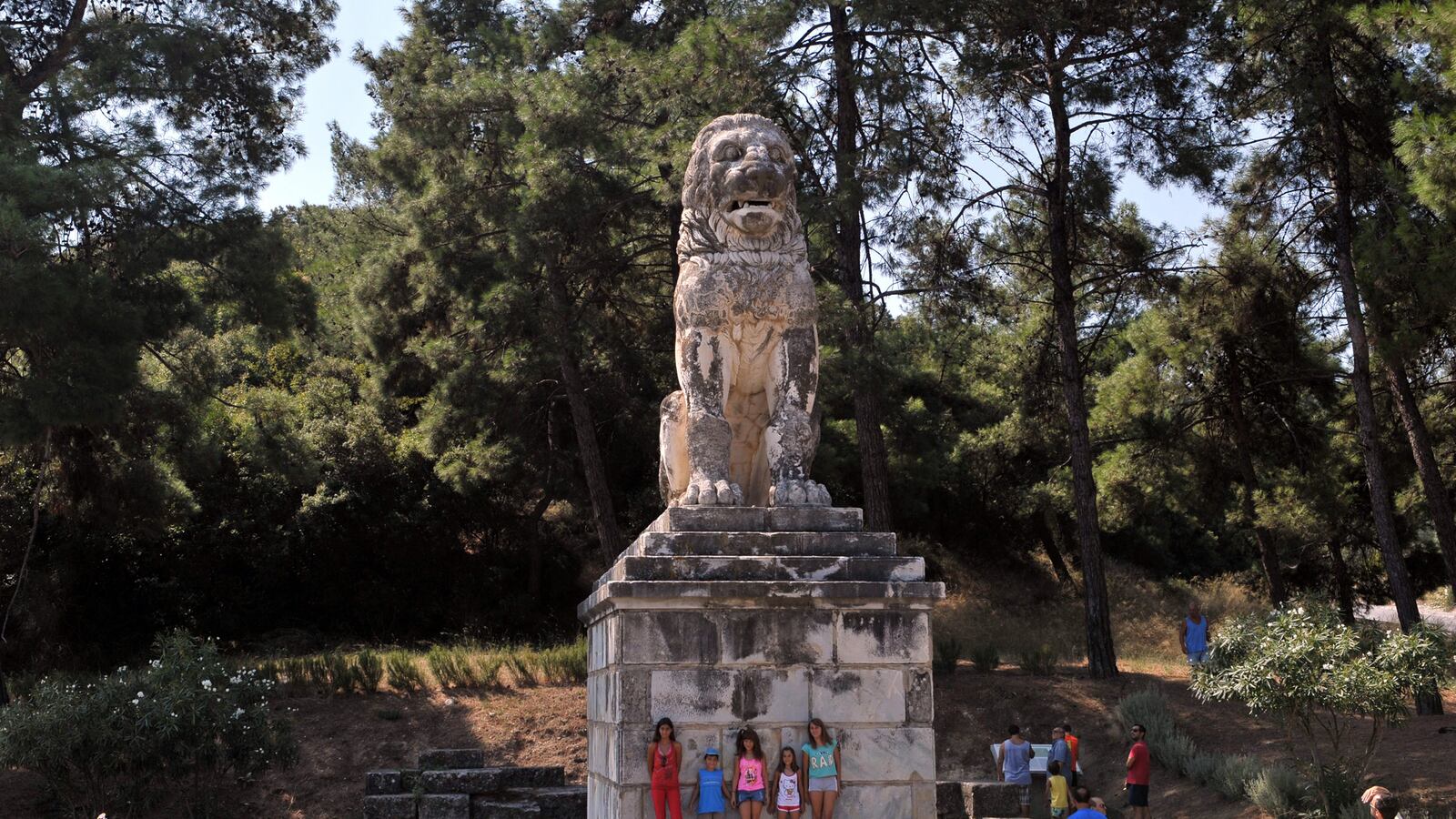With their economy cratering and their government shaky, the Greeks are praying that Alexander the Great—or rather, his mother or son, or one of his generals—will come to their rescue. Greece has high hopes that the giant tomb now being excavated at Amphipolis contains one of these ancient Macedonian leaders. But when the inner chambers of the structure are revealed, sometime within the next few weeks, there may be bitter disappointments in store.
Thus far the tomb at Amphipolis has produced artistic wonders, adding to speculation that its occupant(s) held very high rank. During the past week a superb mosaic, depicting a mythological rape scene, was uncovered on the floor of an antechamber: Hades, driving a chariot, is shown dragging the goddess Persephone down to his underworld kingdom, while a conspiratorial Hermes guides the team of horses. Even with a large circular section missing (but perhaps recoverable), this mosaic is clearly a masterwork, as are the sculpted caryatids (columns in the shape of women) that stand guard just in front of it.
Though these finds have amazed observers worldwide and delighted the Greek nation, they have told little about what might lie beyond the tomb’s as-yet unbreached fourth entrance wall. In fact both the mosaic and the caryatid columns have raised questions as to whether the building dates to the era of Alexander the Great’s successors—the last quarter of the 4th century B.C.—or may even be Roman rather than Greek in provenance.
Establishing the date of ancient monuments is often not easy, especially in the absence of inscriptions or easily datable objects like coins and pottery sherds. No such clues have yet been announced by the archaeological team at Amphipolis, a group led by Katerina Persisteri. Peristeri has vigorously claimed that the structure she is excavating dates to the last quarter the 4th century B.C., the tumultuous era that followed Alexander’s conquest of his vast Asian empire and his sudden demise in 323, but has not said why she thinks so. In a recent interview, Peristeri responded angrily to those who have challenged this date, hinting that it relies on conclusive evidence that, for undisclosed reasons, has not as yet been made public.
Among these challengers is Olga Palagia, professor of archaeology at the University of Athens. After the caryatids were uncovered last month, Palagia, an expert in the history of ancient sculpture, suggested that they were carved not by the Greeks or Macedonians of Alexander’s era, but by Romans of a much later time imitating their Greek predecessors. The mosaic too looks to her eyes more like a work of the 1st than the 4th century B.C. In her view, the Amphipolis building may not hold Macedonian remains at all, but perhaps served to memorialize a Roman military victory in the area—perhaps that at Philippi, a site not far from Amphipolis, where, after the assassination of Julius Caesar, his heir Octavian defeated the senatorial armies of Brutus and Cassius.
Should Palagia’s Roman-era dating prove correct, the Amphipolis find would still be hugely important, but nonetheless deeply disappointing to the Greek nationalist feelings that the excavation has aroused. The idea that the tomb is linked to Alexander—a heroic leader who inspires great pride in modern Greeks—has figured prominently in the announcements and press conferences held by the excavators. Top government officials, including Prime Minister Antonis Samaras, have made highly publicized visits to the site and have claimed it as a monument to the glories of Greek, not Roman, civilization.
By now there is a great deal riding on what will be revealed in the main chambers of the tomb, presumably just beyond the recently cleared third antechamber. A nation beset by economic woes and political uncertainty may receive a badly needed boost to its self-confidence, a reminder of a glorious past when its kings ruled much of the world. Or it may see evidence of the decline that followed, the centuries after Alexander’s when Greeks became subject to “barbarian” Roman invaders. Research into the past has always been politicized in the Aegean region, but the questions surrounding Amphipolis, hopefully due to be answered in the next few weeks, have brought the politics of archaeology to a whole new level.





